new york city
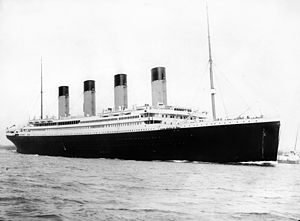 Some historic events seem to continue to intrigue us, many years after the event took place. The RMS Titanic was one of those events. The Titanic sank on its maiden voyage on April 15, 1912…as we all know, considering the movies that have been made detailing and even romanticizing the tragedy. Of course, the way that so many people lost their lives that night is something that many people have wondered about all these years. Musicians who played well into the disaster, in an effort to keep people calm, the many men who died because they did the honorable thing and allowed the women and children to be saved first, and the women who would not leave without their husbands…all of these gave us a glimpse of a time when people did the right thing no matter the cost.
Some historic events seem to continue to intrigue us, many years after the event took place. The RMS Titanic was one of those events. The Titanic sank on its maiden voyage on April 15, 1912…as we all know, considering the movies that have been made detailing and even romanticizing the tragedy. Of course, the way that so many people lost their lives that night is something that many people have wondered about all these years. Musicians who played well into the disaster, in an effort to keep people calm, the many men who died because they did the honorable thing and allowed the women and children to be saved first, and the women who would not leave without their husbands…all of these gave us a glimpse of a time when people did the right thing no matter the cost. 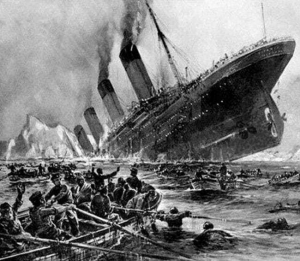 There are precious few of those kinds of people around these days.
There are precious few of those kinds of people around these days.
With all the interest concerning the Titanic, an idea occurred to someone, that maybe there should be a duplicate Titanic…a way to return her to her former glory, even if it is only a duplicate. The new ship is supposed to be an identical copy of the infamous ocean liner, which sank in 1912 following a collision with an iceberg. However, to avoid a repeat disaster, Titanic II will be outfitted with plenty of life boats, and will have a welded, not riveted hull, plus modern navigation and radar equipment.
The project initiated by Australian businessman and politician Clive Palmer, has not always been smooth sailing,  however. The project was announced in April 2012, which was 100 years after the original Titanic sank. The plan was that Titanic II would be the flagship of the proposed cruise company Blue Star Line of Brisbane, Australia. At that time, they intended to launch the Titanic II in 2016. The project was delayed until 2018, and then to an expected 2022 date, but with the 2020 Coronavirus worldwide shutdown, I wonder if that date will also have to be moved back.
however. The project was announced in April 2012, which was 100 years after the original Titanic sank. The plan was that Titanic II would be the flagship of the proposed cruise company Blue Star Line of Brisbane, Australia. At that time, they intended to launch the Titanic II in 2016. The project was delayed until 2018, and then to an expected 2022 date, but with the 2020 Coronavirus worldwide shutdown, I wonder if that date will also have to be moved back.
“The ship will follow the original journey, carrying passengers from Southampton to New York, but she will also circumnavigate the globe, inspiring and enchanting people while attracting unrivaled attention, intrigue and mystery in every port she visits,” said Palmer in a statement. The planned maiden voyage will take passengers from Dubai to New York, however, reports CruiseArabia, with the first sailing scheduled to take place in 2022. It’s possible for this maiden voyage to happen, but it will take a few less problems going forward.
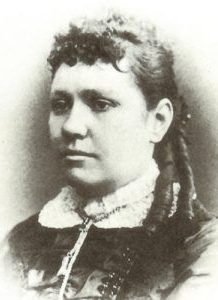 Alice Ivers Tubbs was born in Devonshire, England on February 17, 1851. She was the daughter of a conservative schoolmaster. While Alice was still a small girl, she moved with her family to the United States. The family first settled in Virginia, where Alice attended an elite boarding school for women. When she was a teenager, the family moved with the silver rush to Leadville, Colorado. As a young girl, Alice was raised to be a well-bred young lady, so few people would ever expect her to be known as “Poker Alice.” Nevertheless, marriage can change a person. While living in Leadville, Alice met a mining engineer named Frank Duffield, whom she married when she was just 20 years old. In the mining camps, gambling’s was quite common, and Frank was an enthusiastic player. He enjoyed visiting the gambling halls in Leadville and Alice naturally went along with him, rather than staying home alone. Alice stood quietly and watch her husband play…at first, but Alice was smart, and she picked up the game of poker easily. Soon she was sitting in on the games, and she was winning. Alice’s marriage to Frank Duffield was short-lived. Duffield, who worked in the mines as part of his job, was killed in an explosion. Needing to make a living, Alice, who was well educated, could have taught school, but even with 35,000 residents in Leadville, there was no school. There were also few jobs available for women, and those there were, did not appeal to Alice, so she decided to make a living gambling. Though Alice preferred the game of poker, she also learned to deal and play Faro. Very soon, she was in high demand…as a player and a dealer. Alice was a petite 5 foot 4 inch beauty, with blue eyes and thick brown hair. She was very rare in that she was a “lady” in a gambling hall…and not of the “soiled dove” variety. And Alice loved the latest fashions, she was a sight for the sore eyes of many a miner. Every time Alice had a big win, she began to take trips to New York City to buy the latest fashions.
Alice Ivers Tubbs was born in Devonshire, England on February 17, 1851. She was the daughter of a conservative schoolmaster. While Alice was still a small girl, she moved with her family to the United States. The family first settled in Virginia, where Alice attended an elite boarding school for women. When she was a teenager, the family moved with the silver rush to Leadville, Colorado. As a young girl, Alice was raised to be a well-bred young lady, so few people would ever expect her to be known as “Poker Alice.” Nevertheless, marriage can change a person. While living in Leadville, Alice met a mining engineer named Frank Duffield, whom she married when she was just 20 years old. In the mining camps, gambling’s was quite common, and Frank was an enthusiastic player. He enjoyed visiting the gambling halls in Leadville and Alice naturally went along with him, rather than staying home alone. Alice stood quietly and watch her husband play…at first, but Alice was smart, and she picked up the game of poker easily. Soon she was sitting in on the games, and she was winning. Alice’s marriage to Frank Duffield was short-lived. Duffield, who worked in the mines as part of his job, was killed in an explosion. Needing to make a living, Alice, who was well educated, could have taught school, but even with 35,000 residents in Leadville, there was no school. There were also few jobs available for women, and those there were, did not appeal to Alice, so she decided to make a living gambling. Though Alice preferred the game of poker, she also learned to deal and play Faro. Very soon, she was in high demand…as a player and a dealer. Alice was a petite 5 foot 4 inch beauty, with blue eyes and thick brown hair. She was very rare in that she was a “lady” in a gambling hall…and not of the “soiled dove” variety. And Alice loved the latest fashions, she was a sight for the sore eyes of many a miner. Every time Alice had a big win, she began to take trips to New York City to buy the latest fashions.
Due to her traveling from one mining camp to another to play poker, Alice soon acquired the nickname “Poker Alice.” In addition to playing the game, she often worked as a dealer, in cities all over Colorado including Alamosa, Central City, Georgetown, and Trinidad. Later on, Alice began to puff on large black cigars, still wearing her fashionable frilly dresses. She, nevertheless, never gambled on Sundays because of her religious beliefs. Alice carried a .38 revolver and wasn’t afraid to use it. It was rather a necessity, due to her lifestyle. Alice soon left Colorado and made her way to Silver City, New Mexico, where she broke the bank at the Gold Dust Gambling House, winning some $6,000. The win was followed by a trip to New York City, to replenish her wardrobe of fashionable clothing. Afterward, she returned to Creede, Colorado. She went to work as a dealer in Bob Ford’s saloon…the man who had earlier killed Jesse James. Alice later moved to Deadwood, South Dakota around 1890. In Deadwood, she met a man named Warren G. Tubbs, who worked as a housepainter in Sturgis, but sidelined as a dealer and  gambler. Alice usually beat Tubbs at poker, but that didn’t bother him. He was taken with her and they began to see each other socially. Once a drunken miner threatened Tubbs with a knife, Alice pulled out her .38 and put a bullet into the miner’s arm. I’m sure that man thought the threat was Tubbs, but the man should have watched Alice in stead. Later, the couple married and had seven children…four sons and three daughters. Because Tubbs was a painter by trade, he, along with Alice’s gambling profits, supported the family. The family moved out of Deadwood, to homesteaded a ranch near Sturgis on the Moreau River. Finally, Alice found something she loved more than gambling…for the most part. She helped with the ranch and raised her children. Then, fate would again deal Alice a bad hand. Tubbs was diagnosed with tuberculosis. Alice refused to leave his side. She planned to nurse him back to health. Tubbs lost his fight, and died of pneumonia in the winter of 1910. Alice was determined to give him a proper burial, so she loaded him into a horse-drawn wagon to take his body to Sturgis. It is thought that she had to pawn her wedding ring to pay for the funeral and afterward, went to a gambling parlor to earn the money to get her ring back.
gambler. Alice usually beat Tubbs at poker, but that didn’t bother him. He was taken with her and they began to see each other socially. Once a drunken miner threatened Tubbs with a knife, Alice pulled out her .38 and put a bullet into the miner’s arm. I’m sure that man thought the threat was Tubbs, but the man should have watched Alice in stead. Later, the couple married and had seven children…four sons and three daughters. Because Tubbs was a painter by trade, he, along with Alice’s gambling profits, supported the family. The family moved out of Deadwood, to homesteaded a ranch near Sturgis on the Moreau River. Finally, Alice found something she loved more than gambling…for the most part. She helped with the ranch and raised her children. Then, fate would again deal Alice a bad hand. Tubbs was diagnosed with tuberculosis. Alice refused to leave his side. She planned to nurse him back to health. Tubbs lost his fight, and died of pneumonia in the winter of 1910. Alice was determined to give him a proper burial, so she loaded him into a horse-drawn wagon to take his body to Sturgis. It is thought that she had to pawn her wedding ring to pay for the funeral and afterward, went to a gambling parlor to earn the money to get her ring back.
For Alice, the time spent on the ranch were some of the happiest days of her life and that during those years, she didn’t miss the saloons and gambling halls. Alice liked the peace and quiet of the ranch. Still, she had to make a living, so after Tubbs’ death, she hired a man named George Huckert to take care of the homestead, and she moved to Sturgis to earn her way. Huckert quickly fell in love with Alice and proposed marriage to her several times. Alice didn’t really love him, but finally married him, saying flippantly, “I owed him so much in back wages; I figured it would be cheaper to marry him than pay him off. So I did.” Once again, the marriage would be short. Alice was widowed once again when Huckert died in 1913.
During the Prohibition years, Alice opened a saloon called “Poker’s Palace” between Sturgis and Fort Meade that provided not only gambling and liquor, but also “women” who serviced the customers. One night, a drunken soldier began a fight in the saloon. He was destroying the furniture, and causing a ruckus. Alice pulled her .38 and shot the man. While in jail awaiting trial, she calmly smoked cigars and read the Bible. She was acquitted on grounds of self-defense, but her saloon had been shut down. Now, in her 70s and with her beauty and fashionable gowns long gone, Alice struggled in her last years. She continued to gamble, but these days, she dressed in men’s clothing. Once in a while, she was featured at 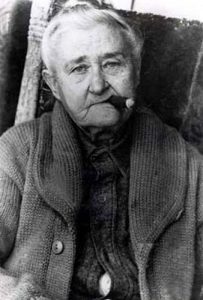 events like the Diamond Jubilee, in Omaha, Nebraska, as a true frontier character, where she was known to have said, “At my age, I suppose I should be knitting. But I would rather play poker with five or six ‘experts’ than eat.” She continued to run a “house” of ill-repute in Sturgis during her later years and was often arrested for drunkenness and keeping a disorderly house. Though she paid her fines, she continued to operate the business until she was finally arrested for repeated convictions of running a brothel and sentenced to prison. The governor took pity on Alice, who was then 75 years old, and pardoned her. At the age of 79, Alice underwent a gall bladder operation in Rapid City. Unfortunately, she died of complications on February 27, 1930. She was buried at Saint Aloysius Cemetery in Sturgis, South Dakota. In her lifetime, Alice claimed to have “won more than $250,000 at the gaming tables and never once cheated.” In fact, one of her favorite sayings was, “Praise the Lord and place your bets. I’ll take your money with no regrets.”
events like the Diamond Jubilee, in Omaha, Nebraska, as a true frontier character, where she was known to have said, “At my age, I suppose I should be knitting. But I would rather play poker with five or six ‘experts’ than eat.” She continued to run a “house” of ill-repute in Sturgis during her later years and was often arrested for drunkenness and keeping a disorderly house. Though she paid her fines, she continued to operate the business until she was finally arrested for repeated convictions of running a brothel and sentenced to prison. The governor took pity on Alice, who was then 75 years old, and pardoned her. At the age of 79, Alice underwent a gall bladder operation in Rapid City. Unfortunately, she died of complications on February 27, 1930. She was buried at Saint Aloysius Cemetery in Sturgis, South Dakota. In her lifetime, Alice claimed to have “won more than $250,000 at the gaming tables and never once cheated.” In fact, one of her favorite sayings was, “Praise the Lord and place your bets. I’ll take your money with no regrets.”
 I recently read a book about the orphan trains, which ran between 1854 and 1929. During that time, approximately 250,000 orphaned, abandoned, and homeless children ride the train throughout the United States and Canada, to be placed with families who were looking for a child, or just as often, a worker for their farm. The orphan train movement was necessary, because at the time, it was estimated that 30,000 abandoned children were living in the streets in New York City. I had heard of the orphan trains, mostly from the movie called “Orphan Train,” but much of what really happened with those children was very new to me, and quite shocking.
I recently read a book about the orphan trains, which ran between 1854 and 1929. During that time, approximately 250,000 orphaned, abandoned, and homeless children ride the train throughout the United States and Canada, to be placed with families who were looking for a child, or just as often, a worker for their farm. The orphan train movement was necessary, because at the time, it was estimated that 30,000 abandoned children were living in the streets in New York City. I had heard of the orphan trains, mostly from the movie called “Orphan Train,” but much of what really happened with those children was very new to me, and quite shocking.
Today, while my husband, Bob Schulenberg and I were in the Black Hills, we rode the 1880 Train, as we almost always do when we are here. When they mentioned that the train had been 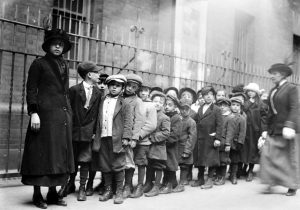 used in the movie “Orphan Train,” a fact that I had heard many times before, the stories from the book I had read came back to mind. My mind instantly meshed to train, the book, and the movie into one event.
used in the movie “Orphan Train,” a fact that I had heard many times before, the stories from the book I had read came back to mind. My mind instantly meshed to train, the book, and the movie into one event.
The children who traveled on the orphan trains were victims of circumstance, and they had no control over their lives at all. Each one hoped that their new family would be nice. The older ones didn’t have high hopes. The older boys pretty much knew that they would be farm hands. And most of them were right many were made to sleep in the barn, because they were thought to be thieves. If they were thieves, it was because they had to steal to survive. They did whatever it took to survive.
 As Bob and I rode the train today, in the eye of my imagination, I could picture what it must have been like to be one of those orphans. The were sitting there watching that big steam engine take them to someplace they didn’t know, and probably didn’t want to go. They didn’t have high hopes for a great future, but then again, the past wasn’t that great either. They were forced to make the best of a bad situation, and the people who were in charge didn’t really care what happened to them. They were just doing their jobs. I have ridden the 1880 Train many times before, but today, it felt a little bit different, somehow. I knew that I wasn’t an orphan riding that train, but I certainly felt empathy for the children who were.
As Bob and I rode the train today, in the eye of my imagination, I could picture what it must have been like to be one of those orphans. The were sitting there watching that big steam engine take them to someplace they didn’t know, and probably didn’t want to go. They didn’t have high hopes for a great future, but then again, the past wasn’t that great either. They were forced to make the best of a bad situation, and the people who were in charge didn’t really care what happened to them. They were just doing their jobs. I have ridden the 1880 Train many times before, but today, it felt a little bit different, somehow. I knew that I wasn’t an orphan riding that train, but I certainly felt empathy for the children who were.

 It was a time when the race across the Atlantic Ocean was a big as the Race to Space would become years later. Since the invention of planes, everyone trained as a pilot wanted to set some sort of record in the aviation industry, and there were plenty of them out there to set. One in particular, the transatlantic flight was in its early stages. The world was waiting for that first successful transatlantic non-stop flight.
It was a time when the race across the Atlantic Ocean was a big as the Race to Space would become years later. Since the invention of planes, everyone trained as a pilot wanted to set some sort of record in the aviation industry, and there were plenty of them out there to set. One in particular, the transatlantic flight was in its early stages. The world was waiting for that first successful transatlantic non-stop flight.
Then on May 8, 1927, it looked like all that would change. That morning French aviator, Captain Charles Nungesser and his co-pilot, Francis Coli took off from Paris in a plane they called The White Bird, to the surprise of many observers who felt the weather conditions were not favorable. Nevertheless, the White Bird taxied down the runway at 5:17 am on that Sunday morning, bound for New York. The plane rose and faltered, and after rolling half a mile it finally labored into the air. As it disappeared in the distance, it was no more than 700 feet off the ground when. Less than five hours later the White Bird was sighted leaving the Irish coast on its way westward over the Atlantic. It looked as if all was going well.
The Bi-Plane was later spotted in the early morning off Nova Scotia fighting strong head winds and heading for the Maine Seaboard. It had been in the air for approximately 33 hours. Shortly after the sighting the plane mysteriously disappeared while trying to be the first to complete the non-stop transatlantic flight, flying from Paris to New York City. On the afternoon of May 9, 1927, Anson Berry, fishing in his canoe on Round Lake in eastern Maine, heard what sounded like an engine overhead, approaching from the northeast. He could not see the airplane, if that was what it was, because of a heavy overcast. He assumed that it was the White Bird, because there weren’t many planes flying in those days.
The engine sounded erratic. Moments later it stopped, and Berry heard what he described years later as a faint, 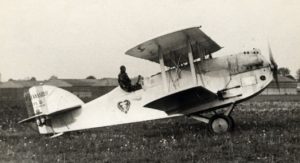 ripping crash. The afternoon was wearing on, and the always unsteady spring weather was worsening, with rain beginning to fall. Perhaps because he did not trust the weather to hold, Berry did not investigate what he heard. The plane, pilot and navigator have never been seen since and two weeks later American aviator Charles Lindbergh, flying solo, successfully crossed from New York to Paris. Many people wondered why no one had ever happened upon the wreck, but the probable area of the crash is in an area of heavy underbrush, and it is likely that the wreck has been buried in the foliage.
ripping crash. The afternoon was wearing on, and the always unsteady spring weather was worsening, with rain beginning to fall. Perhaps because he did not trust the weather to hold, Berry did not investigate what he heard. The plane, pilot and navigator have never been seen since and two weeks later American aviator Charles Lindbergh, flying solo, successfully crossed from New York to Paris. Many people wondered why no one had ever happened upon the wreck, but the probable area of the crash is in an area of heavy underbrush, and it is likely that the wreck has been buried in the foliage.
 As Spring arrives, many people, including my husband Bob and I, have started thinking about the home improvement projects they want to get done. Depending on what you have in mind, it can be a few minor improvements, or it can be big projects, like room gut-jobs and remodels. Whatever it is, you can count on it being work, because no home improvement project is easy. Still, I wonder if we would consider our own home improvement projects to be a daunting a task as the one that took place on the Woolworth building in New York City.
As Spring arrives, many people, including my husband Bob and I, have started thinking about the home improvement projects they want to get done. Depending on what you have in mind, it can be a few minor improvements, or it can be big projects, like room gut-jobs and remodels. Whatever it is, you can count on it being work, because no home improvement project is easy. Still, I wonder if we would consider our own home improvement projects to be a daunting a task as the one that took place on the Woolworth building in New York City.
Retailer Frank W. Woolworth commissioned the building in 1910, which he would name  after himself. This was just a year after the Metropolitan Life Insurance Company moved into their 700-foot tower on Madison Square, just a block away from the triangle-shaped Flatiron Building. The Metropolitan Life Tower had become the world’s tallest building at that time, having taken over that title from the New York headquarters of the Singer Sewing Machine Company, completed in 1908. Of course, as buildings go and builders follow, the latest “tallest building in the world” is nothing more than a challenge to see who will build the next building to beat the record set by the last building in the category.
after himself. This was just a year after the Metropolitan Life Insurance Company moved into their 700-foot tower on Madison Square, just a block away from the triangle-shaped Flatiron Building. The Metropolitan Life Tower had become the world’s tallest building at that time, having taken over that title from the New York headquarters of the Singer Sewing Machine Company, completed in 1908. Of course, as buildings go and builders follow, the latest “tallest building in the world” is nothing more than a challenge to see who will build the next building to beat the record set by the last building in the category.
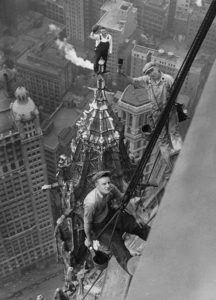
Building a super structure is difficult enough, to be sure, but what about when such a structure need something like, a outside paint job. The reality is that it was going to take some great painters…who were very brave, and hopefully, not afraid of heights. This was no ordinary job. Now, I love hiking, and I have been to the top of a few mountains peaks, but I still don’t like being at the edge of a cliff. I have no desire to stand at the edge of a cliff and look down to see how far away it is. That makes me squeamish. Nevertheless, the brave men chosen to paint the top of the Woolworth building years ago, had to have stomachs made of cast iron, and nerves of steel. They not only went up there and painted the building, but they even found time to prove their bravery in pictures while they were there. I don’t know how OSHA would feel about the stunts they performed, but perform they did, nevertheless.
 For a time, bombs or bomb threats seemed to be the weapon of choice for terrorists and hijackers on the worlds airlines. With better screenings and luggage checks, things have improved and we see fewer incidences like these, but that in no way means that we should ever let our guard down, because evil exists in this world, and awareness of that fact saves lives. On April 2, 1986, we weren’t quite as prepared as we are today. On that day, Trans World Airlines Flight 840 was on a regularly scheduled flight from Los Angeles to Cairo via New York City, Rome, and Athens. The plane was flying at 11,000 feet over Greece, on its way to Athens, when the bomb went off. Four people, including an eight-month old baby, were sucked out of a TWA passenger jet after an explosion ripped a hole in its side.
For a time, bombs or bomb threats seemed to be the weapon of choice for terrorists and hijackers on the worlds airlines. With better screenings and luggage checks, things have improved and we see fewer incidences like these, but that in no way means that we should ever let our guard down, because evil exists in this world, and awareness of that fact saves lives. On April 2, 1986, we weren’t quite as prepared as we are today. On that day, Trans World Airlines Flight 840 was on a regularly scheduled flight from Los Angeles to Cairo via New York City, Rome, and Athens. The plane was flying at 11,000 feet over Greece, on its way to Athens, when the bomb went off. Four people, including an eight-month old baby, were sucked out of a TWA passenger jet after an explosion ripped a hole in its side.
It blew a hole six feet by three feet wide under a window in front of the starboard wing. It is believed the explosion happened at floor level in the passenger compartment itself. The four bodies of the victims were retrieved from a site 87 miles southwest of Athens. Three were from the same Greek-American family, believed to have been a grandmother, her daughter and her granddaughter. Police also found the body of a male passenger identified as a Colombian-born American, sucked out of the plane still in his seat. Remarkably, the remaining 118 passengers and crew survived, including Christian author, Jeanette Chaffee, who has written about this and other incredible situations, called “Extravagant Graces,” a book I think I will have to read. The pilot, Captain Richard Petersen, made an emergency landing, telling Athens control tower that the pressurization in the cabin was failing.

The pilot, Captain Richard Petersen, made an emergency landing, telling Athens control tower that the pressurization in the cabin was failing. He is being hailed as a hero. “We are proud of him,” said a TWA source. Just seven passengers were taken to hospital, and only three were kept in for treatment. One was Ibrahim al-Nami, from Saudi Arabia, who said he had been sitting next to the man who was sucked out with his seat. “We heard a big bang outside the window,” he said,” and then I saw the man next to me disappear and I felt myself being pulled out.” He avoided sharing the same fate by clinging on to his wife’s seat. Another passenger escaped because she left her seat only minutes earlier to go to the lavatory. Florentia Haniotakis, a Greek-American from Ohio, praised the crew. She says they comforted passengers to calm them during the emergency landing.
The airliner was on the same Rome-Cairo route as a similar TWA plane hijacked by Shia Muslim gunmen in June 1985 after leaving Athens for Rome. The investigation found that the bomb had been planted under seat number 10F, probably inside a lifejacket. A group calling itself the Ezzedine Kassam Unit of the Arab Revolutionary Cells claimed responsibility, and said the bombing was in retaliation for US bombing raids against  Libya the previous month. Police initially suspected a Lebanon-born Palestinian woman named Mai Elias Mansur. Mansur was a suspected terrorist connected with the Abu Nidal extremist group, who was involved in an abortive attempt to bomb a Pan American airliner in 1983. She had travelled in seat 10F on an earlier flight of the same Boeing 727. Mansur denied any involvement. After a two year investigation, the US State Department said it believed that she had carried out the bombing, operating on the orders of known Palestinian terrorist Colonel Hawari, but they were unable to definitively prove it. Therefore, nobody has ever been convicted of carrying out the bombing. TWA filed for bankruptcy in 2001 and was taken over by American Airlines.
Libya the previous month. Police initially suspected a Lebanon-born Palestinian woman named Mai Elias Mansur. Mansur was a suspected terrorist connected with the Abu Nidal extremist group, who was involved in an abortive attempt to bomb a Pan American airliner in 1983. She had travelled in seat 10F on an earlier flight of the same Boeing 727. Mansur denied any involvement. After a two year investigation, the US State Department said it believed that she had carried out the bombing, operating on the orders of known Palestinian terrorist Colonel Hawari, but they were unable to definitively prove it. Therefore, nobody has ever been convicted of carrying out the bombing. TWA filed for bankruptcy in 2001 and was taken over by American Airlines.
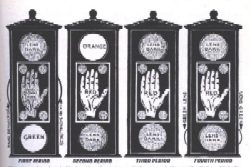 New York City is known for its jaywalking. It may not be the jaywalking capitol of the world, but it has been know to have many jaywalking deaths. That situation inspired the city to install the first walk/don’t walk signs in history on February 5, 1952. Not every inspiration or invention brings change for the better, and I don’t think that all regulation is a good thing, but when it comes to a meeting between a car and a pedestrian, the pedestrian will lose every time. The use of these pedestrian traffic signs are still used today in order to make streets safer.
New York City is known for its jaywalking. It may not be the jaywalking capitol of the world, but it has been know to have many jaywalking deaths. That situation inspired the city to install the first walk/don’t walk signs in history on February 5, 1952. Not every inspiration or invention brings change for the better, and I don’t think that all regulation is a good thing, but when it comes to a meeting between a car and a pedestrian, the pedestrian will lose every time. The use of these pedestrian traffic signs are still used today in order to make streets safer.
Walk/Don’t Walk signs are just a normal fixture these days. We use them at every busy intersection, and don’t give them a second thought…unless they seem to be taking too long to change. Then we feel annoyed, or even cross against the light, which is still jaywalking, even though we are at a crosswalk. While it isn’t uncommon to be annoyed at the wait to cross the street, it can be nice to have that assistance when there is a lot of traffic.
The walk/don’t walk signs have changed over the years, from the very basic style installed in New York City in 1952, to the more modern ones that tell you when to walk or to wait. These are of course designed with the visually impaired person in mind. Our society have become more aware of the needs of the handicapped, and the voice control feature is truly vital.
Strangely, the Walk/Don’t Walk sign has not always been an apostrophe in the word “don’t.” When the first don’t walk signs were installed in New York, they didn’t have an apostrophe between the letters n and t, which makes that the sign was written as ‘dont walk’. It is thought that these signs lack an apostrophe, because it made the stop command more urgent. Another theory about why the signs missed the apostrophe was because  they were made from a single-piece neon light, which made it difficult to add the apostrophe. I don’t suppose we will ever know why, for sure.
they were made from a single-piece neon light, which made it difficult to add the apostrophe. I don’t suppose we will ever know why, for sure.
Between 1999 and 2000, it was decided that the traditional ‘walk’ and ‘don’t walk’ signs should be phased out, because they were difficult to understand for people who didn’t speak English. Many pedestrian accidents occurred with tourists in New York and therefore the city decided to change the traditional sign into a simple stick figure of a walking man when green, and a raised hand when red. Whichever type of walk/don’t walk signs you have in your town, you can be sure that the signs have saved lives.
 There are many ways to get hurt, but one of the most dangerous is the stampede. Caused by people pushing the people in front of them. It can lead to serious crush injuries. In December of 1991, at a City College gymnasium in New York, New York, a benefit basketball game was being held to benefit AIDS education. In a zealous attempt to bring in as much money as possible, the facility was jammed with as many as 2,000 people over capacity. To make matters worse, a group of gate-crashers tried to push their way into the already overcrowded gymnasium. Thus sparked a stampede that crushed hundreds of ticketholders at the bottom of a basement staircase. Most of the injuries happened near the door to an underground gym that was packed with thousands of spectators.
There are many ways to get hurt, but one of the most dangerous is the stampede. Caused by people pushing the people in front of them. It can lead to serious crush injuries. In December of 1991, at a City College gymnasium in New York, New York, a benefit basketball game was being held to benefit AIDS education. In a zealous attempt to bring in as much money as possible, the facility was jammed with as many as 2,000 people over capacity. To make matters worse, a group of gate-crashers tried to push their way into the already overcrowded gymnasium. Thus sparked a stampede that crushed hundreds of ticketholders at the bottom of a basement staircase. Most of the injuries happened near the door to an underground gym that was packed with thousands of spectators.
The problem with this type of situation is the the people in front get pressed tightly between a wall, and the people behind them. Chief medical examiner, Charles Hirsch said, “the eight people killed all were asphyxiated…squeezed front to back…in the stairwell.” The victims included three women and five men and ranged in age from 16 to 28…Sonia Williams 20, Leonard Nelson 17, Dirk Swain 20, Charise Noel, Jubal Rainey 15, Yul Dargan 24, and Darren Brown 29, were among the dead. Videotape shot from the bleachers revealed a seriously overcrowded gymnasium…at least 2,000 people more than its legal capacity of 2,730 and that tickets were still being sold at the door. “It was oversold,” said Mayor David Dinkins.
The stampede pushed most of the victims down the stairs, squeezed them through a doorway and onto the gym floor. They tripped and fell over others waiting there, only to be crushed themselves by the next human wave. “It was a cone effect,” said ambulance worker Sy Collins. “The door opens and there were bodies on the floor and people were just running over them.” Bodies piled up as many as six high. The 29 people who sustained crushing injuries included five Emergency Medical Service staffers, some of whom were mauled as the crowd fought over their services.
According to authorities and witnesses, by late afternoon thousands of people had lined up outside the City College gym in upper Manhattan for what was billed as the “Heavy D and Puff Daddy Celebrity Charity Basketball Game” to benefit AIDS education. The teams were to be captained by Heavy D and Puff Daddy, both rap stars. A recorded telephone message told callers that all of the $12 advance tickets had been sold, but that tickets could be bought at the door for $20. Chief of Patrol Mario Salvaggi said the school’s security director called the police before the game and asked for help because the event was sold out. Police who arrived at 5:00 p.m. found a crowd of between 500 and 700 were milling around outside on Convent Avenue. The game was scheduled to start at 6:00 p.m., and the doors opened at 5:00 p.m. Ticketholders passed through a glass door at street level, walked down a 12 foot wide staircase, and passed through a single metal door into the 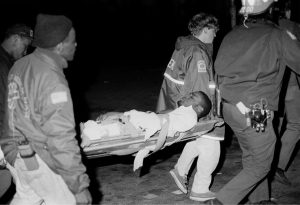 gym. By 7:00 p.m., the game still had not started, and people out on the street began pushing to get inside. A locked glass door was smashed, and people rushed into the gym building. Randy Jones, 30, of the Bronx who was standing inside the door to the gym, said that a woman collecting money at the door got up, took a can holding the night’s receipts, ran into the gym and closed the metal doors behind her, leaving the crowd up in the stairwell. Eventually event organizers began letting people from the stairwell into the gym, but only a few at a time, Jones said. Finally people from the stairs began streaming into the gym, colliding with scores standing inside the door. Soon the floor was covered with injured people.
gym. By 7:00 p.m., the game still had not started, and people out on the street began pushing to get inside. A locked glass door was smashed, and people rushed into the gym building. Randy Jones, 30, of the Bronx who was standing inside the door to the gym, said that a woman collecting money at the door got up, took a can holding the night’s receipts, ran into the gym and closed the metal doors behind her, leaving the crowd up in the stairwell. Eventually event organizers began letting people from the stairwell into the gym, but only a few at a time, Jones said. Finally people from the stairs began streaming into the gym, colliding with scores standing inside the door. Soon the floor was covered with injured people.
 The inspiration for inventions comes from many different sources, and things we would never think could turn into something great, can surprise you. Swiss electrical engineer, George De Mestral had gone for a walk in the woods with his dog, When they got back, De Mestral found himself fascinated with the cockleburs that he had to pull off of his dog. After taking a walk in the woods with his dog, was fascinated by the cockleburs’ ability to cling to his clothes and his dog’s fur. For many dog owners cockleburs are a good reason to grumble. When their pets play outside and return with all sorts of nature stuck to their fur and feet, bringing the outside environment into their once-clean homes, people get annoyed. Nevertheless, not everyone saw this as a big problem.
The inspiration for inventions comes from many different sources, and things we would never think could turn into something great, can surprise you. Swiss electrical engineer, George De Mestral had gone for a walk in the woods with his dog, When they got back, De Mestral found himself fascinated with the cockleburs that he had to pull off of his dog. After taking a walk in the woods with his dog, was fascinated by the cockleburs’ ability to cling to his clothes and his dog’s fur. For many dog owners cockleburs are a good reason to grumble. When their pets play outside and return with all sorts of nature stuck to their fur and feet, bringing the outside environment into their once-clean homes, people get annoyed. Nevertheless, not everyone saw this as a big problem.
When De Mestral looked at the cockleburs under a microscope, he saw the tons of tiny hooks that line cockleburs and discovered they could easily attach to the small loops found in clothing and fur. De Mestral saw this as a opportunity to invent something useful. He experimented with different materials to make his own hooks and loops form a stronger bond. In 1955, after much trial and error, De Mestral decided nylon was perfect and thus Velcro was invented. These days, Velcro is a vital part of everyday life. We use it all the time, and give no thought to life without it.
The word Velcro is a combination of the words “velvet” and “crochet,” and was showcased in a 1959 fashion  show held at the Waldorf-Astoria Hotel in New York City. However, it didn’t receive positive reviews from fashion enthusiasts. I’m sure they thought it would snag material, and pull hair, which it can do, but its positive uses far outweigh its negative issues. Nevertheless, Velcro wasn’t widely used until NASA made it popular in the early 1960s. Apollo astronauts used it to secure items that they didn’t want escaping in their zero-gravity environment. Hospitals and athletic companies eventually used Velcro after realizing the practicality of the material. In 1968, Puma was the first to use Velcro on shoes. Adidas, Reebok, and others followed suit. Today it is used in many things, including the blood pressure cuff. it has simplified our lives immensely, and to think that it was invented by accident.
show held at the Waldorf-Astoria Hotel in New York City. However, it didn’t receive positive reviews from fashion enthusiasts. I’m sure they thought it would snag material, and pull hair, which it can do, but its positive uses far outweigh its negative issues. Nevertheless, Velcro wasn’t widely used until NASA made it popular in the early 1960s. Apollo astronauts used it to secure items that they didn’t want escaping in their zero-gravity environment. Hospitals and athletic companies eventually used Velcro after realizing the practicality of the material. In 1968, Puma was the first to use Velcro on shoes. Adidas, Reebok, and others followed suit. Today it is used in many things, including the blood pressure cuff. it has simplified our lives immensely, and to think that it was invented by accident.
 New York City can get hot in the summer. Maybe that is an understatement. I don’t think that New York City has more heat waves than other places, but because of so much asphalt, the heat is in the air, and then radiates back up from the streets again and again. Heat waves like this can not only make people sick, but they can kill people as well. Sometimes, desperate times bring desperate measures. Bathhouses, beaches, community pools, floating pools docked off the East River, all in an effort to cool off the overheated people. Nobody can say that New York City made no effort over the years to keep residents cool on hot summer days, but what of those who couldn’t get to the places set up too cool the the people off. Something had to be done. Enter the Swimmobile.
New York City can get hot in the summer. Maybe that is an understatement. I don’t think that New York City has more heat waves than other places, but because of so much asphalt, the heat is in the air, and then radiates back up from the streets again and again. Heat waves like this can not only make people sick, but they can kill people as well. Sometimes, desperate times bring desperate measures. Bathhouses, beaches, community pools, floating pools docked off the East River, all in an effort to cool off the overheated people. Nobody can say that New York City made no effort over the years to keep residents cool on hot summer days, but what of those who couldn’t get to the places set up too cool the the people off. Something had to be done. Enter the Swimmobile.
In the crisis, New York City decided to bring the pool to the people. These were the Swimmobile pools. They were attached to a truck, which could be parked on a street all day and conveniently towed away at night. “Swimmobiles began during the Heckscher administration [1960s-1970s] that literally took pools to the streets to underserved areas,” says the Parks Department website. It was more that trying to give more people the right to go swimming…this was life and death. A 1976 New York Times article stated that the city owned five mobile pools, which were towed from Randall’s Island to different corners of the city. These Swimmobiles Probably saved countless lives, and the people had fun too.
These past couple of days have brought temperatures in the high 90s and low 100s to Casper, Wyoming, where  I live, and were it not for air conditioning, I would most likely be screaming for a Swimmobile myself, but I’m quite certain, none would be found. These were something that served its purpose in a time of need, and then went the way of most things when technology advances things…into the past. These days, when we are hit with a heatwave, people drive to the pools, lakes, or rivers…or they simply turn on the air conditioner, or if there happens to be an ice cream truck in the area, we can always indulge in some cold treats, as a way to cool off. Of course, if there is a power blackout, they would have to come up with another solution, as ice cream would not hold out long. Thankfully, outages don’t last too long, most of the time, or we might have to bring back the Swimmobile.
I live, and were it not for air conditioning, I would most likely be screaming for a Swimmobile myself, but I’m quite certain, none would be found. These were something that served its purpose in a time of need, and then went the way of most things when technology advances things…into the past. These days, when we are hit with a heatwave, people drive to the pools, lakes, or rivers…or they simply turn on the air conditioner, or if there happens to be an ice cream truck in the area, we can always indulge in some cold treats, as a way to cool off. Of course, if there is a power blackout, they would have to come up with another solution, as ice cream would not hold out long. Thankfully, outages don’t last too long, most of the time, or we might have to bring back the Swimmobile.

